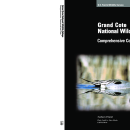What We Do
Refuge staff use a variety of tools to manage wildlife populations and habitat on Grand Cote NWR while maintaining opportunities for the public to participate in recreational activities like hunting and fishing.
Deer Harvest Management
Deer hunting is a significant public use on Grand Cote National Wildlife Refuge but is also used to manage the deer herd and as a result provide healthy habitat. Deer populations should be reduced to under carrying capacity or at a density that the habitat can support. Removing a portion of the herd annually with the appropriate age structure structure
Something temporarily or permanently constructed, built, or placed; and constructed of natural or manufactured parts including, but not limited to, a building, shed, cabin, porch, bridge, walkway, stair steps, sign, landing, platform, dock, rack, fence, telecommunication device, antennae, fish cleaning table, satellite dish/mount, or well head.
Learn more about structure and sex ratios should result in a healthy herd.
Trapping
Trapping is a wildlife management tool used on some national wildlife refuges. Trapping may be used to protect endangered and threatened species or migratory birds or to control certain wildlife populations. The U.S. Fish and Wildlife Service also views trapping as a legitimate recreational and economic activity when there are harvestable surpluses of fur-bearing mammals. Outside of Alaska, refuges that permit trapping as a recreational use may require trappers to obtain a refuge special use permit. Signs are posted on refuges where trapping occurs. Contact the refuge manager for specific regulations.
Management and Conservation
Refuge conservation plans are called “comprehensive conservation plans” (CCPs). The purpose of a CCP is to specify a management direction for the Refuge for the next 15 years. The goals, objectives, and strategies for improving Refuge conditions—including the types of habitat we will provide, partnership opportunities, and management actions needed to achieve desired conditions – are described in the CCP. From there, various step-down plans guide the day-to-day workings of the Refuge.
Our Services
The refuge office is located at 401 Island Road just west of Marksville, LA near the community of Fifth Ward. Staffing is limited so please call ahead before coming by the office. When parking at the office, you can access the Mark Dupuy Walking Trail. The trail is approximately 1.0 miles and winds through the flooded bottomland forest topography typical of Grand Cote NWR. Hikers will walk along the trail through mature bottom land hardwood forest and end on the tower overlooking the waterfowl impoundments . Benches and interpretive signs are provided.
Law Enforcement
For emergencies, CALL 9-1-1!
To report refuge violations call (318) 253-4238 or the Louisiana Department of Wildlife and Fisheries 24-Hour line at 1-800-442-2511.
Laws and Regulations
Below are just a few important rules and regulations for Grand Cote National Wildlife Refuge. Please visit our Regulations brochure for a complete list!
- The refuge is open during daylight hours only, except during hunting season. No camping or overnight stays.
- Be aware of signs indicating closed areas.
- No fires.
- All hunters must obtain and complete a Daily Visitor Use Reporting Card upon entering the refuge. Before leaving the refuge, users must complete card and deposit it in a drop box at one of the check stations.
- Searching for or removing any object of archeological or historical significance, including arrowheads, pottery, etc., as well as any natural materials such as plants, mushrooms, berries, and antler sheds is prohibited.

